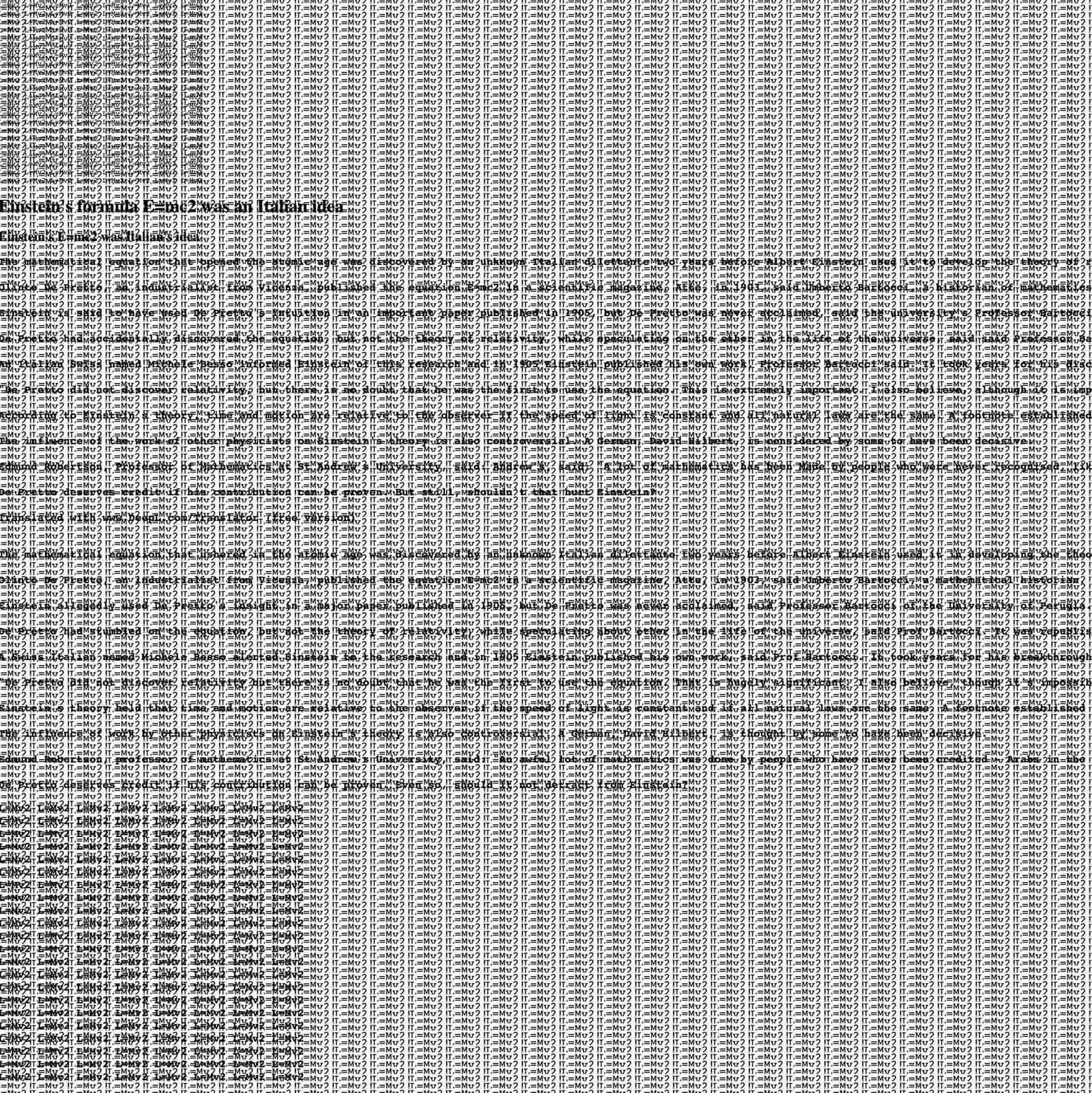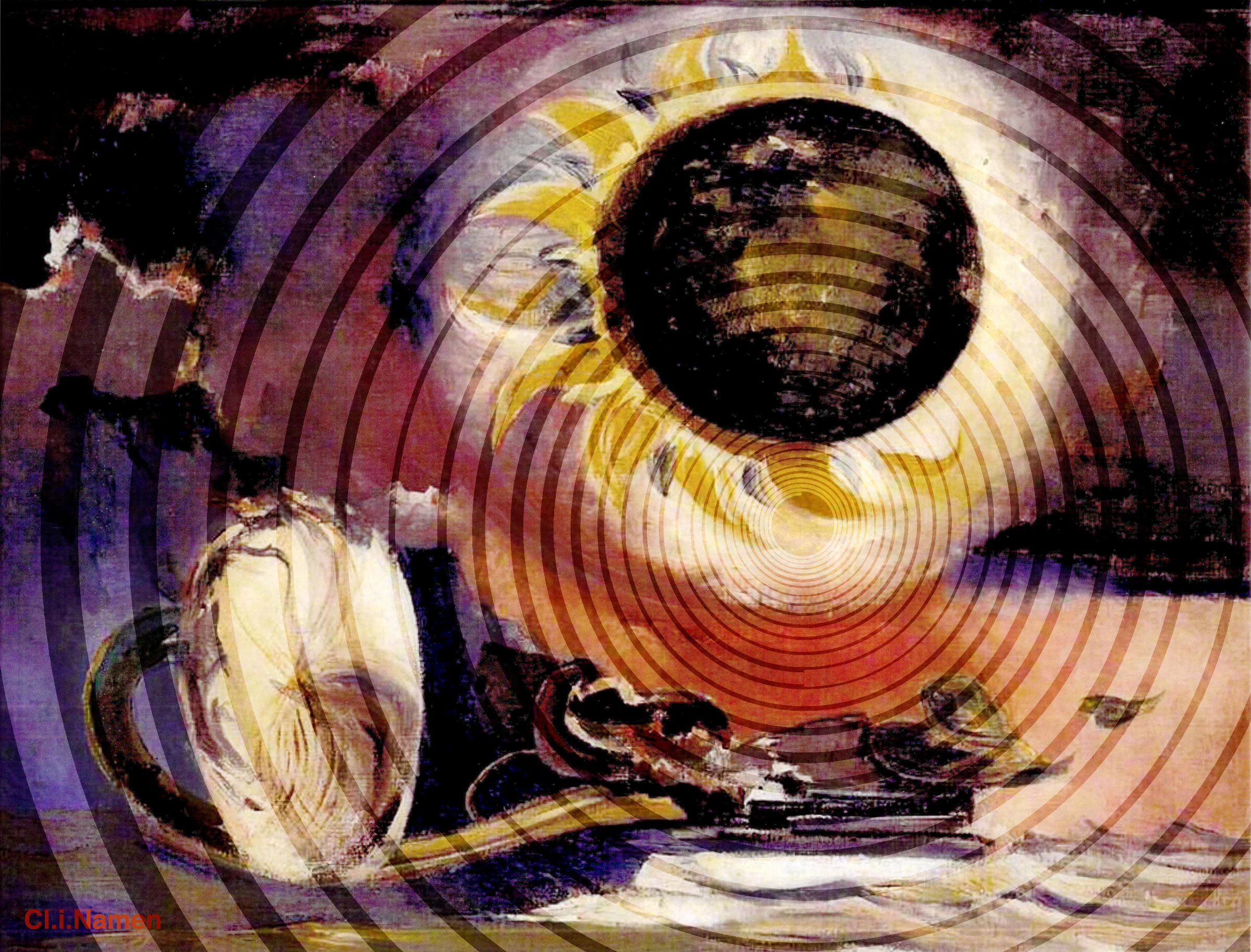As part of of our work for EUROfusion's Horizon Europe public engagement remit, we fictioned a narrative that would take the expo visitors on a journey: a journey at once both fictional and literal. Employing elements of Alternate Reality Gaming (ARGs); an interactive networked narrative that utilises the actual world as a platform, we developed a range of curios (rabbit holes) designed to propel users into part one of the storyline.
Rabbit Holes
In ARGs, rabbit holes are the mechanisms by which players enter into the game world. For the Expo we designed seven entry points that could be deployed in a variety of locations. The trailhead 'Einstein never wrote E=MC2' (pictured above) was developed for print media. It takes advantage of changes in physics notation. Einstein in fact wrote L=mV2, which is functionally equivalent but not commonly known. the url on the poster: leqmv2.net leads to an unusual looking website where the file that should load the home page has been renamed, and thus the website's directory structure is shown instead. A Call to Action urges visitors to help reclaim scientific information that has been stolen by a shadowy group:
Throughout history, humans have been driven to seek out understanding about the universe. Many have learned that working together is the path to true understanding, however there are always some who wish to hoard knowledge for their own gain. There is a group, who we call the Adversaries, who are working to remove scientific discoveries from the shared library of human knowledge. Only through the efforts of people like you, can we reclaim the information they have stolen and keep it free for all of humanity. Your discoveries will be shared with the rest of your fellow searchers as you find the digital strongboxes containing the stolen artefacts. We must combine the fragments of knowledge to uncover the complete artefacts. Only by working together can we restore the knowledge that has been taken by the Adversaries.
Knowledge is power.

Rabbit Holes: The heavily degraded, disabled, yet viewable home page of leqmv2.net
Also accessible In the website's directory is the renamed default page; is a heavily degraded web page containing spurious claims about an Italian industrialist having published E=mc2 two years before Einstein. Two additional unusually named files each contain the same encoded url: radiantmatter.app which takes potential players through an onboarding process aimed towards their installing the Radiant Matter mobile app.
Video version (English) of the Call to Action.
The remaining six rabbit holes are exhibits designed to be installed in third spaces (libraries, churches, cafes, clubs, etc.) and which consist of a heavily redacted book, a framed photograph, two paintings by Paul Nash: Solstice of the Sunflower and Eclipse of the Sunflower, both of which were painted at Wittenham Clumps within a few miles of JET, the Joint European Torus Tokamak reactor, in the Oxfordshire countryside.
These objects each refer to the obscuring of certain aspects of scieintific knowledge whilst the remaining two, an ancient telephone and an old computer, are co-opted into relaying the above Call to Action message in audio and video form. Hidden behind or near the objects are pictograms of a crow whose feathers act as a QR Code, scannable both by curious users and active players.
Swerve of the Atoms
The book exhibit displays two salient pages of Lucretius' De Rerum Natura, in which he writes about the phenomenon he denotes as clinamen atomorum; the 'swerve of the atoms':
Here too is a point i'm eager to have you learn.
Though atoms fall straight downward through the void
By their own weight. yet at uncertain times
and at uncertain points. they swerve a bit -
enough that one may say thev changed direction.
And if they did not swerve. they all would fall
downward like raindrops through the boundless void:
no clashes would occur, no blows befall
the atoms; nature would never have made a thing. (II, 216-24)
Following the narrative, the visible pages of the book have been redacted using a roller stamp that obscures most of the text.

Redacted pages of Lucretius' De Rerum Natura describing the clinamen atomorum; the swerve of the atoms

Rabbit Holes: Inverted photograph of the 1919 solar eclipse (F. W. Dyson, A. S. Eddington, & C. Davidson)
Early Insights
The framed photograph exhibit presents an inverted image of the 1919 solar eclipse.
Taken as part of the observational test of general relativity that was the Eddington experiment, the experience provided Eddington with insights that contributed to his seminal 1920 paper The Internal Constitution of the Stars in which he anticipated the discovery and mechanism of nuclear fusion in stars.
Solar Mythologies, Fine Art and Geographic Coincidence

Doctored version of Solstice of the Sunflower, Paul Nash 1945
Paul Nash painted Solstice of the Sunflower towards the end of his life. The hills in the painting are the Wittenham Clumps, 8km from the Centre for Fusion Energy in the UK.
The painting shows sunwheel, likely drawn from Nash's reading of Sir James Frazer's "The Golden Bough: A Study in Magic and Religion" in which wheels of straw were set alight and rolled down hills as part of a sympathetic magic ritual at the height of summer to ensure the bringing of the sun to earth the following year.
Alongside Solstice of the Sunflower (1945), Eclipse is one of a further three intended paintings in which the sunflower stands in place of the sun.
In her reappraisal of Nash's geological pursuits, Anne Ried wrties that after German scientists split the nucleus of a Uranium atom in 1938, discoveries that were animating the earth "were pointing towards a “dreadful miracle” (Nash’s words)... 30 On 7 August 1945, The Times described how scientists were harnessing the “basic power of the universe”, or to use Truman’s phrase, “the force from which the sun draws its power”. Viewed with this contemporary understanding of ubiquitous radiation in mind, a set of Nash’s 1940s landscapes—saturated as they are in colour and viscous rays—seem to evoke the legion processes of the radiating sun and land." – Paul Nash’s Geological Enigma, Anna Reid

Doctored version of Eclipse of the Sunflower, Paul Nash 1945
“Four pictures in which the image of the Sunflower is exalted to take the part of the Sun. In three of the pictures the flower stands in the sky in place of the Sun. But in the ‘Solstice’ the spent sun shines from its zenith encouraging the sunflower in the dual role of sun and firewheel to perform its mythological purpose. The sun appears to be whipping the sunflower like a top. The Sunflower Wheel tears over the hill cutting a path through the standing corn and bounding into the air as it gathers momentum. This is the blessing of the Midsummer Fire.”
– James King, Interior Landscapes: a Life of Paul Nash (London: Weidenfeld and Nicolson, 1987), p.218.
Old Technologies
An ancient telephone (pictured) and an old computer, are co-opted into relaying the above Call to Action message in audio and video form.
These obsolete technologies point to the long road fusion research has already travelled. In the Control Room, another part of the exhibition, archive photographs and video footage are presented with a history timeline that begins in the early 20C.
Inset into the plinths are small lozenge-shaped hand-tracking devices. These capture visitors' hand movements and trigger playback of the Call to Action messages when the correct movement is detected.
On the right-hand side of the plinth, the crow's feathers are a QR-Code that generates an augmented reality portal when scanned using the exhibition mobile app.

Rabbit Holes: Leap Motion activated telephone exhibit with scannable crow pictogram on the plinth